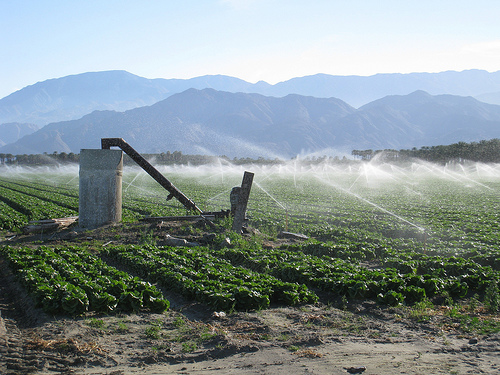Central Valley almond trees reflected in flooded irrigation water.
To many people — particularly environmentalists and family-farm aficionados — the Westlands Water District, on the dusty west side of California’s San Joaquin Valley, conjures up an image of a sprawling empire of large-scale agribusiness. Roughly 600 farmers own land within the district, and grow a veritable cornucopia of tomatoes, almonds, pistachios, lettuce, cantaloupes, grapes, and other crops.
Many farms here are huge, to be sure: One family farms at least 25,000 acres. But there are plenty of smaller farmers like 42-year-old Shawn Coburn, who grows 1,200 acres of mostly almonds. And to him, Westlands is an American Eden.
“There’s a long list of haters,” says Coburn. But “we have the best dirt out there. It’s the best ground in the world.”
There’s only one problem. While the soil here may be good, there’s not much water. At least not since 2007, when a federal judge drastically cut back farmers’ water supplies to protect endangered fish in the Sacramento and San Joaquin river delta in the geographic heart... Read more
